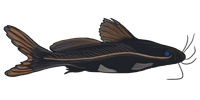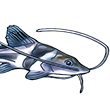Jools wrote:macvsog23 wrote:with most L numbers being hyb,s from either nature or man
Do I take this to mean you think that the 450 odd L-numbers are mostly (say, 300 or so) hybrids? On what basis?
Jools
Not at all as we are discussing Hypan I am saying I agree with several people who say that once a situation arises were this genus has been properly described and documented that only a few will be truly individual Species, the rest will be natural morphs and hybrids.
I used humans as an example a person from China has a totally different look to a person from Africa in fact some one sub Sahara Africa is total different to some one from the cape I am naturally talking about native peoples not European invaders or migrant workers as in The Xhosa or the Arabic invaders from outside sub Saharan Africa.
In fact when I lived in SEA I could tell a persons Tribe or Group from just looking and I can still tell a “Punjabi “from a “Tamil”. But they are all the same spices.
My whole point is that we are far to dependant and blinded by L Numbers, it to me seems that some people think every fish must have an L Number, in fact if your memory is as good as mine you will remember when your involvement with L Numbers was just starting, the idea was to give any fish that was not correctly classified with a scientific name an L number that would be recycled when that fish was classified? This was never going to happen once the rare L Number brigade got a hold of the idea. We now have the price of fish being dependant on not the rarity but the ability of what L Number is hung on them.
I do wish to stress that I am not trying to belittle or rubbish any of the work done by collector hobbyists or people in the fish breeding trade. All I am saying is this one genus that has produced some of the most exciting fish and is one of the easy to keep and breed groups is being misunderstood from a point of identification and the L Number system is being used to add to this confusion.
It is no different to the situation in the 1960,s were some one would describe a fish and hang a name on it with no interest apart from profit. I do not need to mention the main protagonist and would not wish to add to his troubles.
The main reason for my opinion and it is just that an opinion is the easy way that Hypans can be spawned and crossed.
If it can be done in a tank it can be done in nature a flash flood a natural movement of earth not to mention the intervention of the most destructive organism on the planet man.
Hypans are found in small groups in areas that are now isolated but a few hundred years ago could have been connected. Look how quickly we have produced around 10 different variants of the ANCISTRUS. In 1967 I saw a photo of a albino pleco it was the only recorded specimen now you trip over them.















